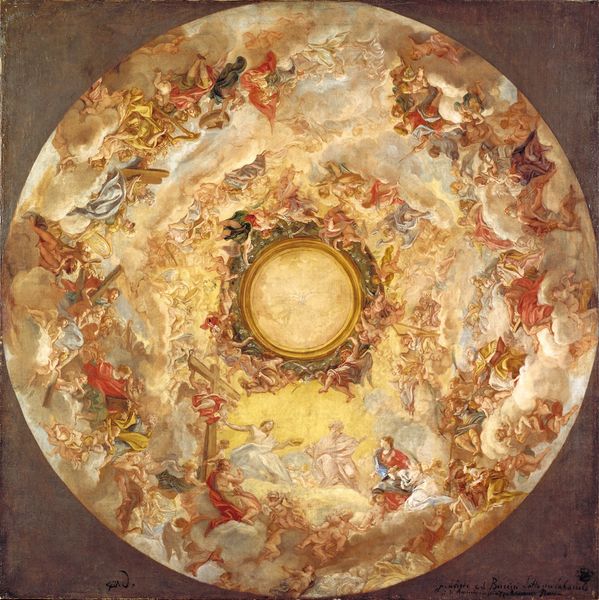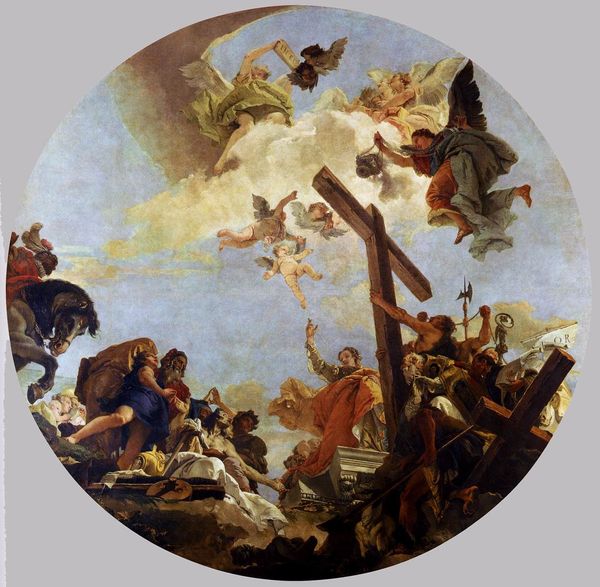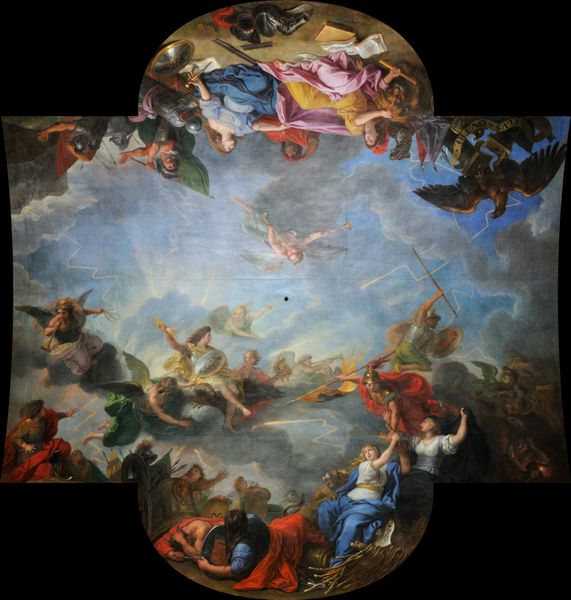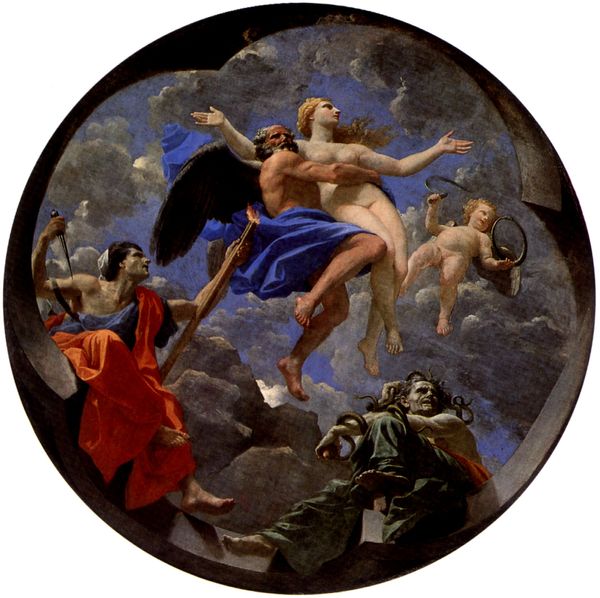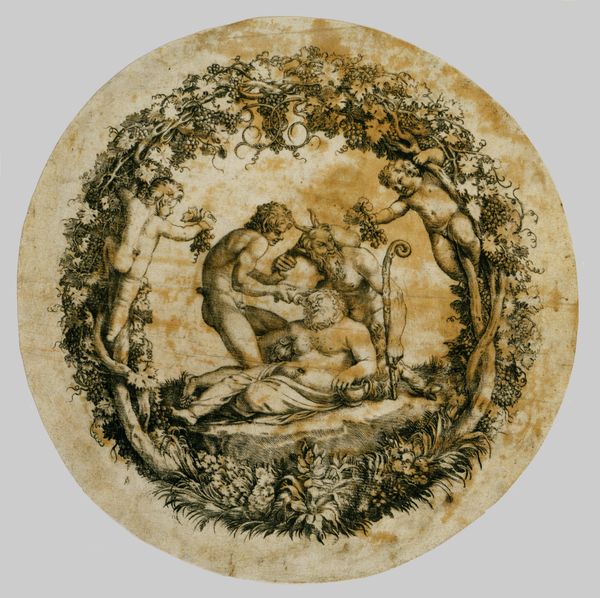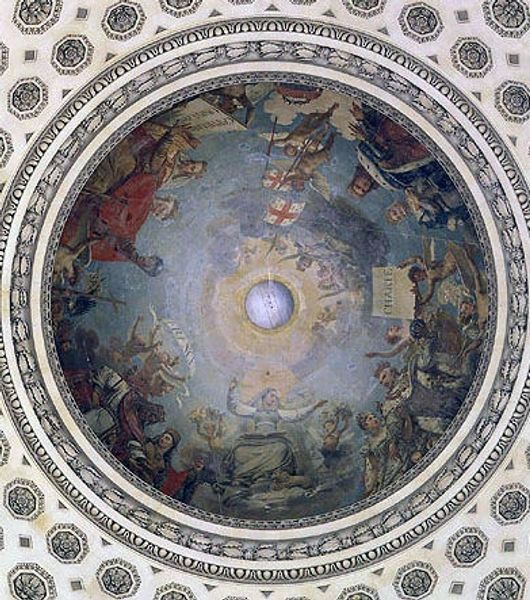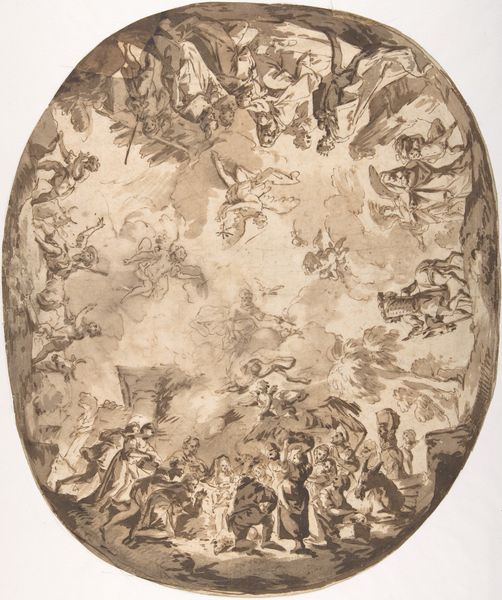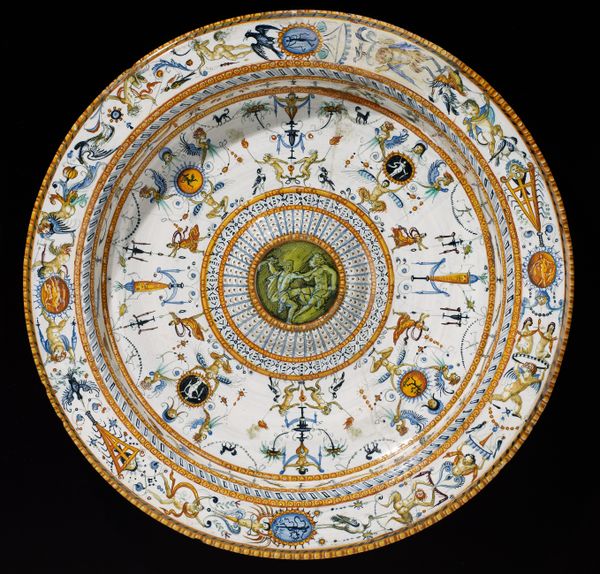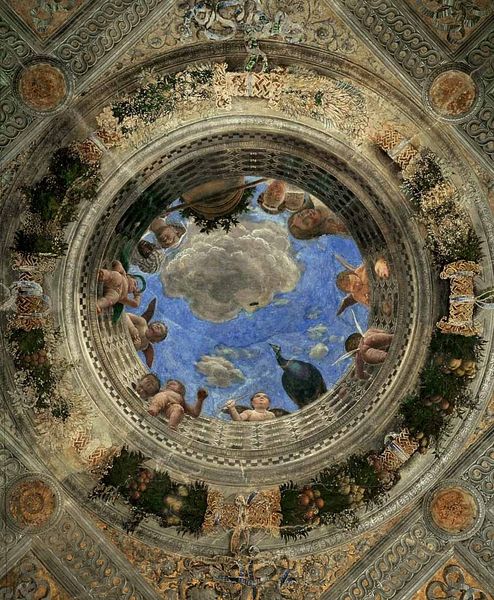
The Miracle of St. Anthony 1798
0:00
0:00
franciscodegoya
Ermita de San Antonio de la Florida, Madrid, Spain
Copyright: Public domain
Curator: Francisco de Goya's fresco, "The Miracle of St. Anthony," completed in 1798, adorns the dome of the Ermita de San Antonio de la Florida in Madrid. A grand statement, wouldn’t you say? Editor: It does have a Baroque dynamism, yet with such muted colors...a swirling assembly of figures, as if glimpsed in a dream. The overall circular composition emphasizes the divine, with a rather unsettling light source. Curator: Unsettling? Perhaps because it fractures the conventional hierarchy we expect in religious art. Consider the light not as purely divine but also as a formal element, shaping the volumetric figures below and creating perspectival distortions when viewed from different angles within the church. Editor: I'm seeing it more as a challenge to authority. Look at how Goya depicted Saint Anthony surrounded by ordinary people – no grand allegorical figures. It presents a saint for the masses. Their expectant gazes suggest collective hope in miracles during an age of revolution and widespread social unease. The central act of the saint raising his hand also strikes me as both a sign of God’s presence and an acknowledgement of human capability. Curator: I concede, the earthly portrayal defies classic religious tropes, replacing them with acute observation of human interaction. This painting’s semiotic complexity emerges from that visual dichotomy between divine subject and profane execution, wouldn't you agree? Editor: It’s Goya reminding us that miracles occur in a context, amidst everyday chaos, desires, and doubts. That context, the cultural landscape of 18th century Spain, cannot be ignored, adding layers to a well known narrative. Curator: So while you see symbolic tension reflecting broader social upheaval, I am compelled by Goya’s ingenious brushstrokes—the immediacy in his technique, so attuned to Baroque drama but proto-Romantic in spirit. Editor: An interesting and appropriate balance indeed. I am seeing it as Goya finding sacred potential within the everyday realm, using religious events to voice the emotions of his contemporary era.
Comments
No comments
Be the first to comment and join the conversation on the ultimate creative platform.

